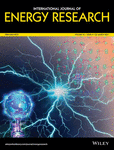Energy absorption characteristics in hybrid composite materials for marine applications under impact loading: Case of tidal current turbine
Summary
The tidal current turbine is the most efficient way to extract energy from the sea. This system can be prone to critical loads such as impact accidental in the installation and maintenance phase. Indeed, several complex modes of damage susceptible to harming the stability of the structure are studied to conceive hybrid composite nozzles with better resistance to damage. For this reason, two scenarios of low-velocity impact of a hybrid composite nozzle (glass/carbon) were investigated. In both cases, the impact was realized in the region of the trailing edge of the nozzle, and the results obtained were compared between three different laminated. On the other hand, damage modeling was formulated using the finite element method based on the Hashin criteria. Energy conservation of the nozzle was verified to validate the numerical model. Also, the effects of the impact velocity and the panel's flexibility on the initiation and propagation of damage have been studied. Depending on the results, the stacking sequence significantly influences the formation of damage. However, the results show that the hybrid nozzle with CGG (carbon/glass/glass) stacking has a higher impact resistance compared to other laminates.
CONFLICT OF INTEREST
The authors declare that they have no known competing financial interests or personal relationships that could have appeared to influence the work reported in this paper.
Open Research
DATA AVAILABILITY STATEMENT
The data that support the findings of this study are available from the corresponding author upon reasonable request.




